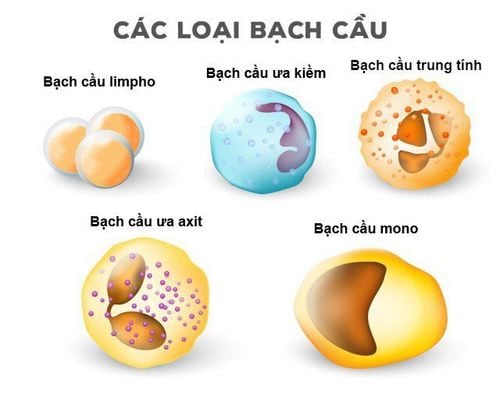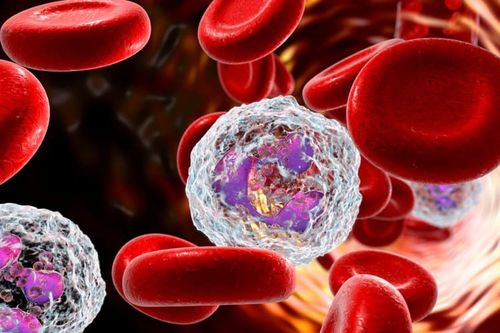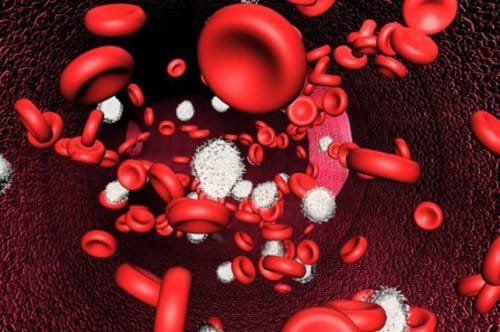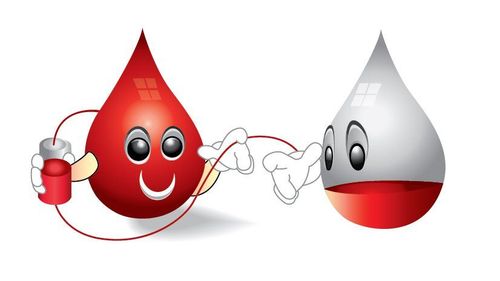This is an automatically translated article.
Acute leukemia is a malignant blood disease in which primitive blood cells in the bone marrow cease to differentiate but do not stop reproducing, proliferating in the bone marrow and in the peripheral blood.
1. What is Leukemia?
Leukemia occurs when young white blood cells grow out of control and continue to divide but fail to develop into normal cells and fail to perform normal white blood cell functions. These abnormal cells can invade normal white blood cells, leading to an increased risk of infection.
Cells become 'abnormal' because they cannot fully mature. This failure to fully mature is a major factor in leukemia. These 'baby', or immature, cells build up in the body because they don't die and aren't worn down.
When leukemia develops, leukemia cells accumulate in the bone marrow. Eventually all normal white blood cells, red blood cells, and platelets run out of space or don't renew. Healthy bone marrow is replaced by immature cells, which eventually enter the bloodstream and travel throughout the body. Therefore, as the number of immature cells increases, the number of red blood cells, white blood cells and platelets decreases.
So, when you have leukemia, you will have some symptoms or signs of a lack of a certain type of blood cell.

Các loại bạch cầu trong máu
2. Types of Leukemia
The four common forms of leukemia are:
Acute Lymphoblastic Leukaemia (ALL) Chronic Lymphocytic Leukaemia (CLL) Acute Myeloid Leukemia Leukaemia (AML) Chronic Myeloid Leukaemia (CML) Acute Leukaemia (Acute Leukaemia) occurs when cells in the early stages of development are affected. As a result, these cells are not even mature and are completely useless. As a result, patients with acute leukemia are susceptible to inflammation, bleeding, and anemia, and most require immediate treatment.
Chronic Leukaemia (Chronic Leukaemia) occurs when rather “More developed” cells are affected. Normally these cells have largely normal function, and patients experience less anemia, bleeding, and inflammation. Patients in this situation do not need immediate treatment and some people do not need any treatment at all. Leukemia is divided into myeloid (myeloid) or lymphoid (lymphoid) cells.
When leukemia affects the cells that eventually turn into platelets, red blood cells, granulocytes, and megaloblastic monocytes, the condition is called myeloid leukemia. myelogenous), granulocytic, or myelocytic.
When leukemia affects cells that eventually turn into lymphocytes, the condition is called lymphoblastic, lymphoid, lymphocytic, or lymphocytic leukemia. blood (lymphatic)
3. Acute myeloid leukemia
Acute myeloid leukemia is one of the most common blood malignancies in adults, the incidence of which increases with age. More than half of acute myeloid leukemia cases are detected after age 60, with the mean age of the patients being 64.
Acute myeloid leukemia begins in the bone marrow (the soft part inside the bones, where new blood cells are made), and in most cases the cancer cells quickly enter the circulating blood. Sometimes, cancer cells can spread to some other organs in the body such as liver, spleen, lymph nodes, central nervous system, ...
In acute blood cancer, cancer cells are the immature cells. This type of blood cancer progresses quickly because the young cells divide very quickly, and the cancer cells even divide uncontrollably.
Acute myeloid leukemia is divided into several different types. Different types of acute myeloid leukemia may have different treatment and prognosis. Some types of acute leukemia respond so well to treatment, patients can recover from the disease. However, with some other types of acute leukemia, the prognosis may be worse.
Once a patient has been identified with acute myeloid leukemia, the doctor will discuss treatment options. Treatment options can be influenced by the type of AML, laboratory results, prognosis, as well as current disease status.

Bệnh bạch cầu cấp dòng tủy là một trong những bệnh máu ác tính thường gặp nhất ở người trưởng thành
4. Acute Leukemia
Acute leukemia is a hematologic malignancy characterized by excessive proliferation of undifferentiated or poorly differentiated leukocytes. The cause of acute leukemia is still unknown.
The onset of acute leukemia can be sudden with symptoms such as high fever, heavy bleeding, severe weakness or come on gradually with symptoms such as fatigue, pallor, low-grade fever, mouth sores that do not heal , oozing bleeding at the root of the tooth. Sometimes the patient has no special symptoms, only discovered incidentally when the patient has a bleeding tooth that cannot be stopped or when the patient is a woman with long-term menorrhagia.
About treatment, including aggressive treatment: Using chemotherapy, combining many drugs in combination to treat symptoms and improve the patient's general condition. When there are symptoms of acute leukemia, patients should see a doctor for a timely treatment plan, because if acute leukemia is not treated early, it will be life-threatening.
If you have a need for consultation and examination at Vinmec Hospitals under the national health system, please book an appointment on the website (vinmec.com) for service.
Please dial HOTLINE for more information or register for an appointment HERE. Download MyVinmec app to make appointments faster and to manage your bookings easily.













